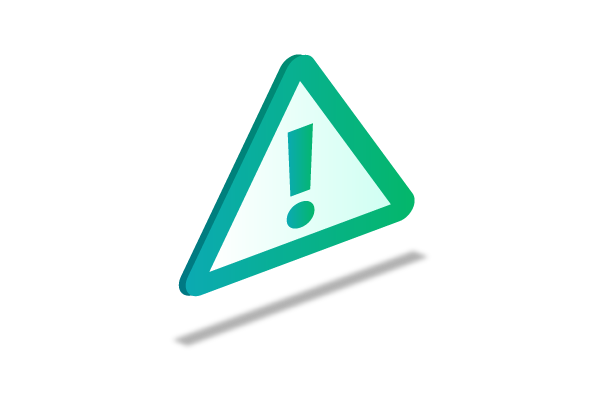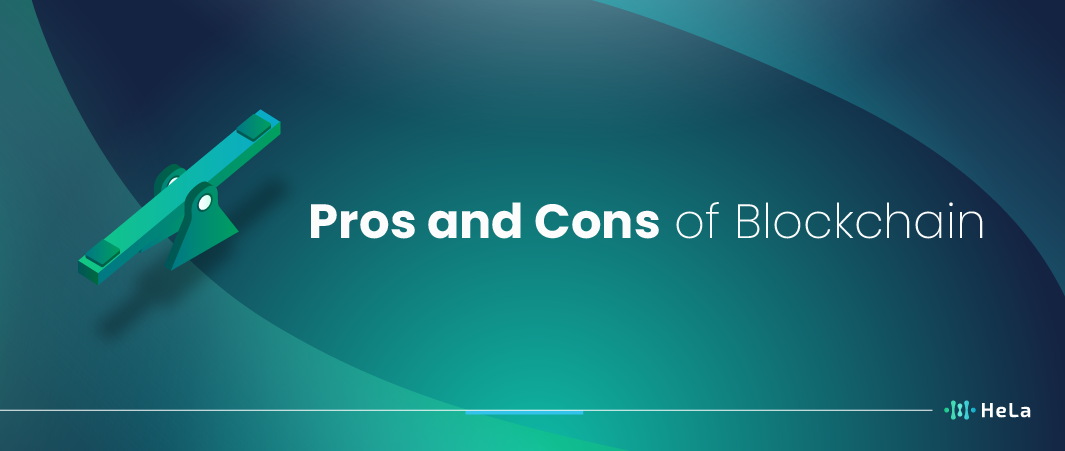Blockchain, a word that has stormed the tech industry with promise and intrigue, offers an immutable ledger system that many believe will revolutionize countless sectors. But like any technology, while it shines bright with potential, there are shadows of limitations to be addressed. We’ll explore the advantages and disadvantages of blockchain in this in-depth research, striving for a fair understanding that goes beyond the marketing hoopla.
Blockchain holds the guarantee of conveying security, straightforwardness, and decentralization in exchanges, making it a favorite in segments extending from back to supply chain administration. There are still issues to be settled and troubles to overcome, in spite of the fact that, as with any innovation that’s still in its relative earliest stages. This exposition gives a bird’s-eye see of these components, laying the basis for an astute discussion on blockchain technology‘s potential for the longer term.
The Undeniable Benefits of Blockchain

Due to its apparent focal points over various businesses, blockchain innovation has pulled in a part of intrigued as of late. Blockchain, at its heart, could be a disseminated record that’s decentralized and records exchanges on an organization of computers. Various benefits of this innovation have the potential to convert the way we do trade, handle information, and communicate online.
Transparency and Trust
The straightforwardness of blockchain is one of its most vital preferences. An exchange is obvious to everybody within the organization once it is recorded on the blockchain. Participants can independently verify transactions without depending on a centralized authority thanks to this transparency, which serves to increase participant trust. This capability is especially useful in fields like finance, supply chain management, and healthcare where trust is crucial.
Security
Blockchain secures data and transactions using cryptographic methods. Since each piece within the chain is associated to the one some time recently, it is exceptionally challenging for anybody to alter with the data. Blockchain is the leading choice for shielding private information, bringing down the plausibility of extortion, and anticipating undesirable get to since of its permanence and security.
Also Read: Blockchain vs. Cryptocurrency: Exploring Function and Differences
Decentralization
Blockchain runs on a decentralized organization, in order to differentiate from routine centralized frameworks. This shows that there isn’t a single point of disappointment or control. A network of nodes verifies transactions, and consensus processes guarantee the accuracy of the data. Decentralization can lower the likelihood of system failures and increase its resistance to intrusions.
Efficiency and Cost Savings
Blockchain can streamline complex processes by eliminating intermediaries and automating tasks through smart contracts. This efficiency not only saves time but also reduces costs associated with manual processing and intermediaries. For instance, in the financial sector, blockchain can significantly reduce transaction fees and settlement times.
Global Accessibility
Blockchain is not bound by geographic boundaries. It allows for global accessibility and participation. Anyone with an internet connection can join the network, which is especially beneficial for cross-border transactions and global supply chains.
Data Integrity and Verification
Blockchain ensures data integrity and accuracy. Once information is recorded on the blockchain, it cannot be changed without consensus from the network. This makes it ideal for industries where data accuracy and verification are critical, such as in the healthcare sector for maintaining patient records.
Traceability and Accountability
The transparent and immutable nature of blockchain enables traceability of assets and transactions. This can be invaluable in supply chain management, helping track the origin of products, ensuring the authenticity of luxury goods, and even helping combat counterfeit medications.
Tokenization and Digital Assets
Blockchain enables the development of digital tokens that represent physical assets. Opportunities in fields like real estate, the arts, and even the development of new varieties of digital currency like cryptocurrencies have been made possible by this invention.
Reduced Fraud
Blockchain innovation is exceptionally safe from extortion since of its straightforwardness and security. Blockchain technology’s capacity to affirm the authenticity of exchanges can be valuable to money related tech and installment processors in order to lower the hazard of false movement.
Smart Contracts
These self-executing contracts mechanize the requirement and execution of legally binding assertions when predefined conditions are met. Smart contracts can be utilized in an assortment of businesses, counting genuine bequest exchanges, protections, and lawful administrations.
Wide-ranging businesses can benefit from blockchain technology’s unquestionable points of interest, which guarantee to boost security, straightforwardness, proficiency, and believe in our progressively computerized environment. The way we conduct business, manage data, and interact online is likely to change as this technology develops and finds additional applications.
Potential Applications that Showcase its Strengths

Blockchain technology has gained prominence for its unique features, which offer various advantages in a wide range of applications. Here’s a more detailed look at some potential applications that showcase the strengths of blockchain:
Cryptocurrencies and Digital Assets
The creation and organization of cryptocurrencies like Bitcoin and Ethereum is the foremost well-known utilization case for blockchain technology. Blockchain may be an alluring alternative for advanced cash since of its decentralized and permanent nature, which ensures secure and open exchanges.
Supply Chain Management
Blockchain can be used to track the provenance and movement of products in a supply chain. Each step in the supply chain is recorded on the blockchain, providing transparency and traceability. This is particularly valuable in industries where product authenticity and origin are crucial, such as the food and luxury goods sectors.
Smart Contracts
Blockchain enables the execution of self-executing smart contracts. These contracts automatically execute and enforce terms and conditions when predefined conditions are met. They find applications in areas like legal agreements, insurance, and real estate transactions, streamlining processes and reducing the need for intermediaries.
Healthcare Data Management
Blockchain can secure the capacity and sharing of therapeutic records and wellbeing information. Patients have more noteworthy control over their information, and healthcare suppliers can get to exact and up-to-date data whereas keeping up understanding protection and security.
Voting Systems
Voting systems’ astuteness, security, and straightforwardness can all be progressed by blockchain innovation. Race extortion is less likely since each vote is recorded on the blockchain, making beyond any doubt that it cannot be changed or altered with.
Digital Identity Verification
Blockchain innovation can be utilized to oversee advanced personalities. The decentralized structure of the blockchain guarantees that individual information is secure and not controlled by a single party, bringing down the peril of personality burglary. Users have control over their identity.
Intellectual Property Protection
Licenses, copyrights, and trademarks are all cases of mental property that can be time stamped and its possession and beginning confirmed with the assistance of blockchain innovation. The rights of innovators and trend-setters may be superior as a result of this.
Energy Trading
In the energy sector, blockchain can facilitate peer-to-peer energy trading. Individuals or businesses with renewable energy sources can sell excess energy directly to others on a blockchain platform, increasing energy efficiency and reducing costs.
Real Estate Transactions
Blockchain can streamline the process of buying and selling real estate by reducing the need for intermediaries and ensuring transparent and tamper-proof property records.
Cross-Border Payments
Blockchain technology has the potential to cut down on the time and money required by conventional banking systems for international money transactions. Transactions across borders can now be completed more quickly and at lower cost as a result.
Provenance in Art and Collectibles
Blockchain can be used to verify the authenticity and ownership history of artworks and collectibles. This is crucial in the art world to prevent fraud and ensure the value of high-end items.
Tokenization of Assets
On a blockchain, assets like real estate, equities, or fine art can be tokenized, opening them up to a wider spectrum of investors. This may improve liquidity and lower investment entry barriers.
These utilize cases highlight the versatility and control of blockchain innovation in conveying straightforwardness, security, and decentralization over various businesses. It’s pivotal to keep in mind that each utilization case may request a diverse approach to executing blockchain, as well as contemplations for versatility, legitimate compliance, and agreement forms.
The Limitations of Blockchain

In later years, blockchain innovation has pulled in a parcel of intrigue and offer, especially in connection to cryptocurrencies like Bitcoin. It’s pivotal to get it that blockchain has its impediments and troubles rather like any other innovation. Here are several significant blockchain technology drawbacks:
Scalability Issues
The adaptability of blockchain is one of its greatest disadvantages. Conventional blockchains can as it were to prepare a certain sum of exchanges per moment, particularly those that utilize Proof of Work (PoW) agreement forms. Handling times for exchanges can end up discernibly slower as more clients connect the arrangement.
Energy Consumption
Blockchain networks that use PoW, like Bitcoin and Ethereum, require substantial computational power, which results in high energy consumption. This has led to environmental concerns and discussions about finding more energy-efficient consensus mechanisms.
Transaction Costs
Transaction fees on popular blockchains can be quite high during times of network congestion. This can make microtransactions less feasible and deter some use cases.
Immutable Data
Although immutability is sometimes viewed as a plus, it can be a drawback if false or fraudulent data is put to the blockchain. Depending on the blockchain’s design, it may be impossible or extremely difficult to correct errors or reverse transactions.
Regulatory Challenges
The decentralized and pseudonymous nature of many blockchain systems can pose regulatory challenges. It can be challenging for governments to enforce laws, taxation, and compliance on blockchain transactions and participants.
Lack of Privacy
The majority of public blockchains are transparent, allowing anybody to see every transaction. Although certain applications benefit from this transparency, it can also pose a threat to user privacy.
Smart Contract Vulnerabilities
Smart contracts, self-executing code on the blockchain, can have vulnerabilities that lead to hacks and financial losses. Developers need to be extremely cautious when writing and deploying smart contracts.
Adoption and Usability
Although blockchain technology has a lot of potential, due to usability and user experience issues, its adoption in numerous industries has been delayed. Many people and companies lack the level of technical expertise needed to use blockchain.
Interoperability
Various blockchains frequently run in isolation, which restricts their capacity for communication and data sharing. To overcome this restriction, interoperability solutions are being developed.
Legal and Regulatory Uncertainty
Blockchain’s legal and regulatory environment is constantly changing. The adoption of blockchain technology may be hampered by uncertainty, particularly in sectors that are subject to extensive government regulation.
It’s crucial to remember that continuing blockchain-related research and development aims to lessen some of these restrictions. For occurrence, a few of the adaptability, vitality, and security issues are tended to by second-layer scaling arrangements, interchange agreement procedures, and private blockchains. In any case, taking these confinements into consideration is vital when assessing the appropriateness of blockchain innovation for specific use cases.
Misconceptions Surrounding Blockchain
In later years, blockchain innovation has pulled in a part of interest and offer, generally since its association to cryptocurrencies like Bitcoin. In any case, there are a number of misinterpretations around blockchain innovation that as often as possible cause errors and perplexity. These misconceptions can hinder its adoption and inhibit its potential for various applications beyond digital currencies. Here are some of the common misconceptions surrounding blockchain:
Blockchain is Only for Cryptocurrencies
One of the foremost inescapable myths is that blockchain innovation and cryptocurrency are the same thing. Whereas it is genuine that numerous advanced monetary standards are upheld by blockchain, this innovation has employment that goes well past monetary. The usage of blockchain is expanding to include voting systems, healthcare, and supply chain management. It is a flexible technology that has the power to completely alter numerous industries.
All Blockchains are Public
Many individuals think that every blockchain is open and transparent. There are both open and private blockchains within the genuine world. Private blockchains are as they were open to a small number of members, to differentiate from open blockchains like Bitcoin. Businesses frequently employ private blockchains for internal operations, and they could not be available to the broader public.
Blockchain is Completely Anonymous
Blockchain transactions are not completely anonymous, despite the fact that they frequently reveal users’ true identities. Transactions are pseudonymous, which means that they are connected to specific addresses rather than names. However, advanced techniques can be used to link addresses to individuals, and compliance with regulations often requires identifying participants in transactions.
Blockchain is Always Secure
Because of its cryptographic architecture, blockchain is frequently seen as secure. However, a number of variables, such as consensus techniques, network size, and governance, affect a blockchain’s security. Blockchain networks may occasionally be subject to attacks, such as the 51% attack on proof-of-work blockchains.
Blockchain Solves Every Problem
Some individuals think that blockchain offers a universally applicable answer to all issues. Although it has several benefits, like openness and immutability, it might not be the ideal option in many situations. A project’s unique requirements must be evaluated in order to decide whether blockchain is the best technology to use.
Blockchains are Always Decentralized
Decentralization is a key feature of many blockchains, but not all blockchains are decentralized. Some private and consortium blockchains may have a centralized authority overseeing their operations. Decentralization is a design choice, and it is essential to understand the level of decentralization in a particular blockchain network.
Blockchain is Instant and Scalable
Blockchains are often criticized for their scalability and speed. Some people assume that they can replace traditional financial systems overnight. However, many blockchain networks, especially public ones, can be slow and face scalability challenges. Solutions like layer 2 scaling and improved consensus algorithms are being developed to address these issues.
Smart Contracts are Always Perfect
Smart contracts, which are self-executing contracts with the terms of the agreement directly written into code, are not infallible. Mistakes in smart contracts can lead to vulnerabilities or unexpected behavior. Proper coding and auditing are essential to ensure the reliability and security of smart contracts.
Understanding these misconceptions is crucial for making informed decisions about blockchain adoption and implementation. Blockchain technology has significant potential, but it is essential to separate reality from fiction to leverage its benefits effectively.
Looking Ahead: The Future of Blockchain
Looking ahead, the future of blockchain holds promising developments that aim to address some of the current limitations while introducing new possibilities. One notable direction of exploration involves hybrid models that combine the advantages of both centralized and decentralized systems. These hybrid solutions could offer a more balanced approach, leveraging the security and transparency of blockchain while mitigating some of its drawbacks, which is a crucial aspect of addressing the pros and cons of blockchain.
Also Read: How Cross-Chain Bridges Enhance Blockchain Interoperability?
As our understanding of blockchain technology deepens and misconceptions are clarified, we can anticipate more industries adopting this innovative tool. The potential applications of blockchain are vast, and it is increasingly becoming integrated into various sectors, becoming an integral part of their operations. This integration has the potential to revolutionize industries such as finance, supply chain, healthcare, and more, showcasing the adaptability and versatility of blockchain in addressing the pros and cons of blockchain within each unique context.
The future of blockchain holds promise in overcoming the current challenges and limitations. The exploration of hybrid models and the growing acceptance of blockchain across industries is indicative of its increasing relevance in our digital world. As we move forward, it is essential to balance the pros and cons of blockchain effectively to harness its full potential for various applications.
Conclusion
As we stand on the precipice of what might be a blockchain-driven future, it’s essential to look at this technology with a balanced lens. The pros and cons of blockchain are evident, showcasing a tool teeming with potential yet facing challenges that need addressing.
The allure of a decentralized, transparent, and secure system is hard to ignore, especially in an increasingly digital world. But as we navigate this terrain, awareness of its limitations will be just as crucial as celebrating its strengths. After all, in understanding both the light and shadows of blockchain, we can better harness its potential for a brighter, more efficient future.
As with all technological evolutions, time will be the ultimate test for blockchain. Yet, given its transformative possibilities, there’s little doubt that its imprint on our world will be profound and lasting.
Disclaimer: The information provided by HeLa Labs in this article is intended for general informational purposes and does not reflect the company’s opinion. It is not intended as investment advice or recommendations. Readers are strongly advised to conduct their own thorough research and consult with a qualified financial advisor before making any financial decisions.

Joshua Soriano
I am a writer specializing in decentralized systems, digital assets, and Web3 innovation. I develop research-driven explainers, case studies, and thought leadership that connect blockchain infrastructure, smart contract design, and tokenization models to real-world outcomes.
My work focuses on translating complex technical concepts into clear, actionable narratives for builders, businesses, and investors, highlighting transparency, security, and operational efficiency. Each piece blends primary-source research, protocol documentation, and practitioner insights to surface what matters for adoption and risk reduction, helping teams make informed decisions with precise, accessible content.
- Joshua Soriano#molongui-disabled-link
- Joshua Soriano#molongui-disabled-link
- Joshua Soriano#molongui-disabled-link
- Joshua Soriano#molongui-disabled-link

